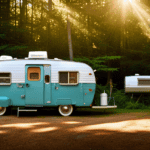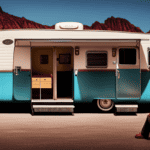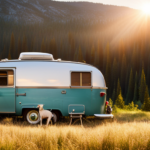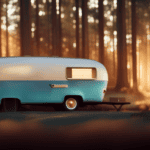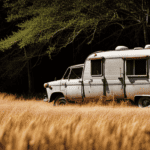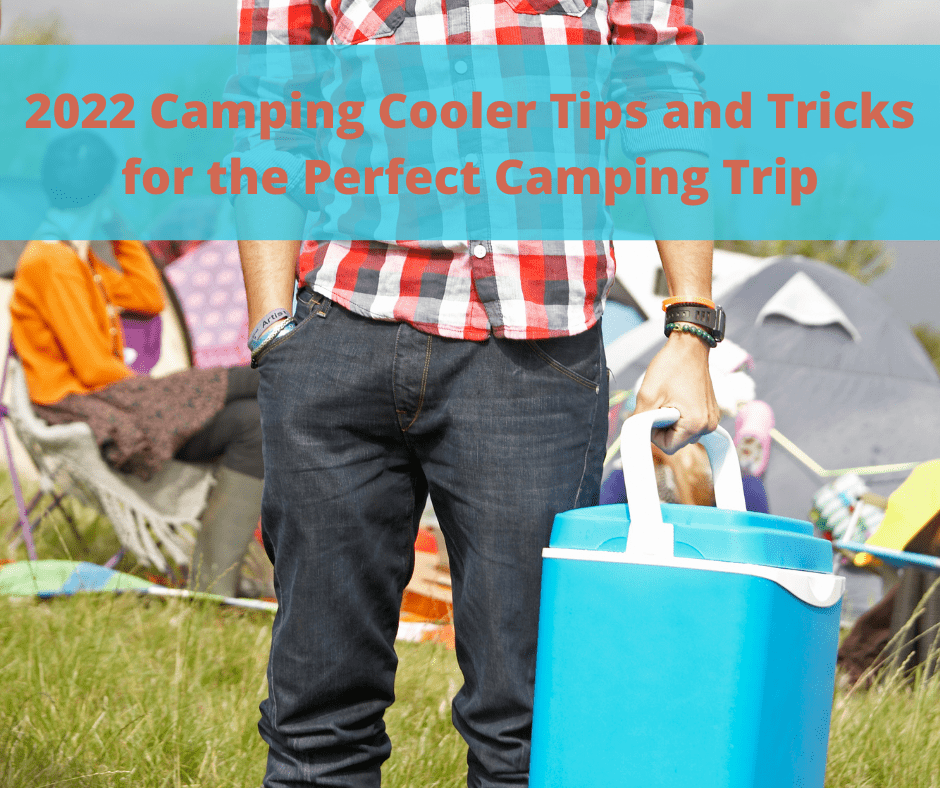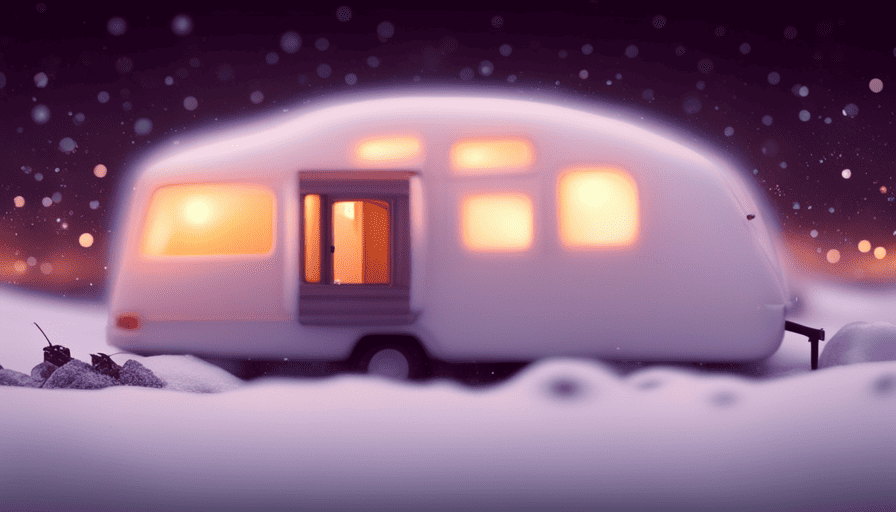Have you ever been on a road trip, driving through stunning landscapes, only to realize that you’ve misplaced the title for your beloved camper? As the sun sets and anxiety sets in, fear not my fellow travelers, for I have the solution to your problem.
In this comprehensive guide, I will walk you through the process of obtaining a lost title for your camper, ensuring that you can continue your nomadic lifestyle without a hitch. From understanding the importance of a title to completing the necessary paperwork and contacting your local Department of Motor Vehicles (DMV), I will leave no stone unturned.
So gather your wits and embark on this journey with me, as we navigate the maze of bureaucracy and emerge victorious, holding a shiny new duplicate title in our hands. Let’s get started on reclaiming the freedom of the open road!
Key Takeaways
- Importance of having a title for a camper
- Tips for protecting the camper’s title
- Gather necessary information and documentation for obtaining a lost title
- Complete application for a duplicate title and follow instructions carefully to avoid delays
Understand the Importance of a Title for Your Camper
You can’t fully enjoy the adventures and memories made in your camper without understanding the importance of having a title.
The title for your camper is a legal document that establishes ownership and proves that you’re the rightful owner. It’s crucial for a number of reasons. First and foremost, it provides you with the peace of mind that your camper is legally yours. Without a title, you may face difficulties when selling or transferring ownership of your camper.
Additionally, having a title allows you to obtain insurance for your camper, which protects your investment in case of accidents or damages.
To protect your camper’s title, there are a few important tips to keep in mind. Firstly, always keep the title in a safe and secure location, such as a locked drawer or a safe deposit box. It’s also a good idea to make a photocopy of the title and keep it in a separate location, just in case the original is lost or damaged. Finally, be cautious when lending your camper to others, as any damages or legal issues that may arise could potentially affect the title.
Now that you understand the importance of having a title for your camper, it’s time to gather the necessary information and documentation to obtain a lost title.
Gather the Necessary Information and Documentation
To begin the process, first, gather all the required information and documentation, such as the purchase receipts and any previous registration papers, just like assembling the pieces of a jigsaw puzzle to reveal the hidden picture. Understanding the lost title process is crucial in order to navigate through the necessary steps efficiently. By collecting the right documents, you will have a smoother experience when dealing with your local Department of Motor Vehicles (DMV).
To make things easier, I have created a table below that outlines the key documents you will need to gather:
| Required Documents | Additional Information |
|---|---|
| Purchase receipts | Proof of ownership and sale |
| Previous registration papers | Proof of previous title and transfer |
| Identification documents (driver’s license) | Proof of identity |
| Bill of sale | Proof of purchase and sale |
| Vehicle history report | Additional information about the camper |
By having these documents ready, you will be well-prepared to navigate the lost title process. Once you have gathered all the necessary information and documentation, the next step is to contact your local DMV. This will allow you to proceed with the necessary paperwork and requirements to obtain a new title for your camper.
Contact Your Local Department of Motor Vehicles (DMV)
To begin the process of getting a lost title for my camper, I’ll need to contact my local Department of Motor Vehicles (DMV).
I will need to locate the nearest DMV office in my area and find out their specific requirements for obtaining a lost title.
By doing so, I can ensure that I have all the necessary information and documentation needed to successfully complete this process.
Locate the Nearest DMV Office
Finding the nearest DMV office is as simple as using an online locator tool. Just enter your zip code or address, and it will provide you with a list of nearby DMV offices. You can also find the DMV phone number for each location, so you can call ahead and make sure they can assist you with getting a lost title for your camper.
To make it easier for you, here’s a table with the top 5 DMV offices in your area:
| DMV Office | Address | Phone Number |
|---|---|---|
| Downtown DMV | 123 Main Street | 555-1234 |
| Westside DMV | 456 Elm Avenue | 555-5678 |
| North DMV | 789 Oak Road | 555-9012 |
| South DMV | 987 Pine Boulevard | 555-3456 |
| East DMV | 654 Cedar Lane | 555-7890 |
Now that you know where the nearest DMV office is, let’s check their requirements for obtaining a lost title for your camper.
Check the DMV’s Requirements for a Lost Title
Once you arrive at the nearest DMV office, you’ll want to check their specific requirements for obtaining a replacement title. It’s important to understand title requirements because each state may have different regulations. The DMV will provide you with a list of documents you need to bring, such as identification, proof of ownership, and any applicable fees. Contact your local DMV beforehand to ensure you have all the necessary paperwork. They may also have additional requirements, such as a completed application form or a notarized statement.
By familiarizing yourself with these requirements, you can save time and ensure a smooth process when you visit the DMV. Once you understand what is needed, you can proceed to the next step of completing the application for a duplicate title.
Complete the Application for a Duplicate Title
To complete the application for a duplicate title for my camper, I’ll need to fill out the required forms and pay the applicable fees.
The forms will likely include an application for a duplicate title. This application will require me to provide information about the camper, such as the make, model, and VIN number. Additionally, I’ll need to provide proof of ownership, such as a bill of sale or previous registration documents.
Once I’ve completed the forms, I’ll need to submit them along with the necessary fees to the appropriate department or agency.
Fill Out the Required Forms
Completing the necessary forms can be a frustrating process, but it’s the first step in reclaiming the title for your beloved camper. To ensure a smooth experience, it’s crucial to understand the process and avoid common mistakes. Here are three key points to keep in mind when filling out the required forms:
-
Provide accurate information: Double-check all the details you provide, such as the vehicle identification number (VIN) and your personal information. Any errors or inconsistencies can delay the process.
-
Include supporting documents: Attach any necessary documents, such as a copy of your driver’s license, proof of ownership, or a bill of sale. These documents help verify your ownership and expedite the title replacement.
-
Follow the instructions carefully: Read the instructions on the forms thoroughly and follow them precisely. Missing any required fields or signatures can cause unnecessary delays.
Once you’ve completed the forms correctly, you can proceed to the next step of the process and pay the applicable fees.
Pay the Applicable Fees
First, finalize the financial aspect and fulfill the fee requirement to move forward in the process of reclaiming your cherished camper’s title. Understanding the fees involved is crucial, as it varies from state to state.
Typically, you’ll be required to pay a fee for the duplicate title itself, as well as any additional fees for expedited processing or mailing. Some states may also assess penalties or taxes if the title’s been lost for an extended period.
It’s essential to research and familiarize yourself with your state’s specific fee structure to ensure you’re prepared. Once you have a clear understanding of the fees, you can proceed with the payment.
After paying the applicable fees, you can then move on to the next step, which is to submit the application and supporting documents for your camper’s lost title.
Submit the Application and Supporting Documents
Once you’ve gathered all the necessary documents, it’s time to submit your application for a lost title for your camper. Understanding the title application process is crucial to ensure a smooth and successful submission.
The first step is to carefully review the application form and make sure you’ve filled it out correctly. Double-check all the required fields and provide accurate information to avoid any delays or complications. It’s important to be thorough and detail-oriented when completing the application.
Next, gather all the supporting documents that are required for your specific situation. This may include proof of ownership, such as a bill of sale or previous title, as well as identification documents like your driver’s license. Make copies of all the documents and keep the originals in a safe place.
Once you have everything in order, submit your application and supporting documents to the appropriate government agency or department. Be sure to include any required fees and follow the instructions for submission carefully. Common mistakes in title applications include missing signatures, incomplete forms, or failing to include all the necessary documents.
After submitting your application, await the processing of your application. This typically takes several weeks, so be patient. In the meantime, it’s a good idea to keep copies of all the documents you submitted and any correspondence related to your application. This will help you stay organized and easily reference any information if needed.
Await the Processing of Your Application
While you patiently wait for your application to be processed, it is advisable to keep copies of all the submitted documents and any related correspondence to stay organized and easily refer back to any information if necessary. This will help you track the progress of your application and ensure that everything is in order. It is important to note that the processing time for a lost title application can vary depending on the jurisdiction and the workload of the relevant department. Therefore, it is crucial to remain patient and avoid contacting the department for updates unless it has been an extended period without any communication.
In the meantime, you can check the application status online, if available, or contact the relevant department to inquire about the estimated processing time. Keeping track of your application will help you stay informed and anticipate when you may receive your duplicate title. Once your application is processed, you will be notified, and you can proceed to the next step to receive your duplicate title.
Receive Your Duplicate Title
When you receive your duplicate title for your camper, it’s important to verify the accuracy of the document. Check that all the information, such as the vehicle identification number (VIN) and your personal details, are correct.
Additionally, make sure to keep the duplicate title in a safe place, such as a secure folder or a safety deposit box, to prevent it from getting lost or damaged.
Verify the Accuracy of the Duplicate Title
To ensure the precision of the duplicate title, it is imperative to verify its accuracy. This step is crucial in order to avoid any potential issues or complications down the line. To assist you in this process, here is a table summarizing the key details that should be present on the duplicate title:
| Column 1 | Column 2 | Column 3 | Column 4 |
|---|---|---|---|
| Vehicle Make | Vehicle Model | Vehicle Year | Vehicle Identification Number (VIN) |
By carefully examining the duplicate title and cross-referencing the information with your camper’s details, you can confirm that all the necessary information is correct. Once you have verified the accuracy of the duplicate title, it is important to keep it in a safe place to prevent any future loss or damage. Transitioning into the next section, let’s discuss how to properly store the duplicate title to ensure its long-term safety.
Keep the Duplicate Title in a Safe Place
Safeguard the duplicate title in a secure location to ensure its long-term preservation and shield it from any potential harm or misplacement. The importance of the duplicate title can’t be overstated, as it serves as legal proof of ownership for your camper.
To keep the duplicate title safe, follow these steps:
- Store it in a fireproof and waterproof container to protect it from damage.nn2. Keep it in a locked safe or a safety deposit box to prevent unauthorized access.nn3. Make copies of the duplicate title and store them in separate locations for added security.nn4. Consider digital storage options, such as scanning and saving the title electronically, for easy retrieval and backup.
By taking these precautions, you can ensure that your duplicate title remains intact and readily available when needed.
With the duplicate title secured, the next step is to update your camper’s title with the new duplicate title.
Update Your Camper’s Title with the New Duplicate Title
To update your camper’s title with the new duplicate title, there are two important steps to take.
First, notify your insurance company about the change in title and provide them with the updated information. This ensures that your camper remains properly insured.
Second, visit your local DMV office and bring the new duplicate title along with any required documents to update the title on file. This step is crucial to ensure that your camper’s title is legally recognized and reflects the correct information.
Notify Your Insurance Company
Don’t forget to let your insurance company know about your lost camper title! It’s important to notify your insurance company as soon as possible to ensure that your camper is properly protected.
Here are four key items to consider when understanding insurance coverage and filing a claim with insurance:
-
Contact your insurance agent: Reach out to your insurance agent and explain the situation. They’ll guide you through the necessary steps to update your policy.
-
Provide necessary documentation: Your insurance company may require certain documents, such as a police report or a copy of the duplicate title, to process your claim.
-
Understand your coverage: Review your insurance policy to understand what’s covered and what steps need to be taken in case of a lost title.
-
Update your policy: Once you’ve obtained a duplicate title, update your policy with the new information.
Now that you’ve notified your insurance company, it’s time to update the title with the DMV.
Update the Title with the DMV
First things first, head on over to the DMV and update that title for your beloved camper!
When you lose the title to your camper, it’s important to update the ownership information with the DMV. This process involves transferring ownership from the previous owner to you, the current owner.
Start by gathering all the necessary documents, such as a completed application for title and registration, proof of identification, and any supporting documentation requested by the DMV. Be prepared to pay any applicable fees as well.
The DMV will guide you through the process and provide you with a new title for your camper.
Once you have updated the title, you can move on to the next step and consider applying for a bonded title (if necessary), which we will discuss in the next section.
Consider Applying for a Bonded Title (if necessary)
When considering a bonded title for a camper, there are several factors to take into account. First, it’s important to understand when it’s necessary to pursue a bonded title. This typically occurs when you’re unable to obtain a clear title due to missing or incomplete paperwork.
Once you’ve determined that a bonded title is necessary, it’s crucial to familiarize yourself with the process and requirements involved. This includes completing the necessary paperwork, providing proof of ownership, and paying any required fees.
It’s essential to be thorough and detail-oriented throughout this process to ensure a successful outcome.
When to Consider a Bonded Title
Consider obtaining a bonded title for your lost camper as a viable option to navigate the complexities of the situation. While there are alternatives to a bonded title, such as obtaining a lost title without going through the bonding process, a bonded title can provide a more straightforward and efficient solution.
With a bonded title, you can establish legal ownership of your camper, even without the original title. This process involves obtaining a surety bond from a licensed bonding company, which acts as a guarantee to protect any potential claims against the camper’s ownership.
It’s important to understand the process and requirements involved in obtaining a bonded title, as it may vary depending on your state’s regulations. By taking this step, you can ensure a smoother journey towards obtaining a new title and resolving the issue of a lost title for your camper.
Understand the Process and Requirements
When considering a bonded title for your camper, it is important to understand the process and requirements involved. This will ensure a smooth and successful outcome. To begin, you will need to gather the necessary documentation, such as proof of ownership, a completed application form, and any supporting documents required by your state’s Department of Motor Vehicles. Additionally, you may need to provide a surety bond or other financial guarantee to protect against any potential claims on the lost title. Once you have all the required paperwork, you can submit your application to the appropriate authority and pay any applicable fees. The process may take some time, as the authorities will need to verify the information provided and process your request. Taking these steps will help you obtain a new title for your camper. Now, let’s explore some preventative measures to avoid losing your title again.
Take Preventative Measures to Avoid Losing Your Title Again
I always make sure to store my important documents in a safe place to avoid losing them again. Whether it’s a fireproof safe, a locked drawer, or a secure digital storage system, I have a designated spot for my title and other important paperwork that gives me peace of mind.
Additionally, I’ve learned the importance of making copies of these documents and keeping them in separate locations. This way, even if the original title goes missing, I still have a backup that I can rely on.
Store Important Documents in a Safe Place
To keep your important documents, like a lost title for your camper, safe and easily accessible, make sure you’ve got a designated storage spot that’s as secure as Fort Knox. Storing important documents in a safe place is crucial to prevent them from getting lost or damaged. One effective way to ensure the safety of your documents is by utilizing digital storage. By scanning your documents and saving them on a secure cloud platform, you can easily access them from anywhere and avoid the risk of physical loss. Additionally, it’s important to create backup copies of your documents. Having duplicates will provide an extra layer of protection in case the original gets lost or destroyed. By following these steps, you can safeguard your important documents and minimize the chances of losing your camper’s title again. Now, let’s explore the next step of making copies of important documents.
Make Copies of Important Documents
After ensuring that all of my important documents are stored in a safe place, the next step I took was making copies of them.
This is an essential part of safeguarding important documents, especially when it comes to getting a lost title for a camper. Making copies of important documents provides an extra layer of security in case the originals are misplaced or damaged.
In the case of a lost title, having a copy of the original document can expedite the process of obtaining a new one. Additionally, having copies of important documents allows me to keep one set at home and another set in a separate location, further reducing the risk of losing them all at once.
By making copies of my important documents, I can ensure that I’m prepared for any unforeseen circumstances that may arise.
Frequently Asked Questions
How much does it cost to apply for a duplicate title for a camper?
Applying for a duplicate title for a camper involves a cost, which varies depending on the state and specific circumstances. The application process typically requires filling out a form, providing proof of ownership, and paying the required fees.
It is important to gather all necessary documents and information before starting the process to ensure a smooth and efficient application.
Can I apply for a duplicate title online or do I have to visit the DMV in person?
Yes, you can apply for a duplicate title online or in person at the DMV. When applying online, you’ll need to provide certain documents such as proof of ownership, identification, and payment for the duplicate title fee.
However, if you choose to visit the DMV in person, you’ll also need to bring the completed duplicate title application form.
It’s important to check your state’s specific requirements and procedures for obtaining a duplicate title.
How long does it typically take for the DMV to process an application for a duplicate title?
The processing time for an application for a duplicate title at the DMV varies depending on the state and the specific circumstances. However, it typically takes around 2-4 weeks for the DMV to process the application and issue a duplicate title.
The requirements for obtaining a duplicate title usually include completing an application form, providing proof of ownership, paying a fee, and submitting any necessary supporting documentation.
It is important to check with your local DMV for specific requirements and processing times.
What should I do if my camper is registered in a different state than where I currently reside?
If my camper is registered in a different state than where I currently reside, there are a few steps I need to take. First, I should contact the DMV in the state where my camper is currently registered to inquire about the process for transferring the registration to a new state.
Once I have that information, I can begin applying for a lost title in the new state. This will involve submitting the necessary paperwork and fees to the DMV in the new state.
Are there any circumstances where I would not be eligible to receive a duplicate title for my camper?
Ironically, there are some circumstances where I may not be eligible to receive a duplicate title for my camper. Lost title exceptions can vary depending on the state, but common reasons include outstanding liens, unresolved legal issues, or incorrect documentation.
To obtain a duplicate title, I’ll need to provide certain Lost title documentation such as identification, proof of ownership, and a completed application. It’s important to contact the local DMV to understand the specific requirements and ensure a smooth process.
Conclusion
In conclusion, getting a lost title for a camper can be a daunting process, but with the right steps, it’s achievable. Remember the importance of a title and the documentation needed to obtain a duplicate. Contact your local DMV and complete the necessary application.
By following these steps, you’ll receive your duplicate title and be able to update your camper’s records accordingly. It’s like finding a hidden treasure in the woods, a journey that requires patience and perseverance but ultimately rewards you with the valuable prize you seek.
So, take the necessary steps to avoid losing your title again and enjoy your camping adventures worry-free.



